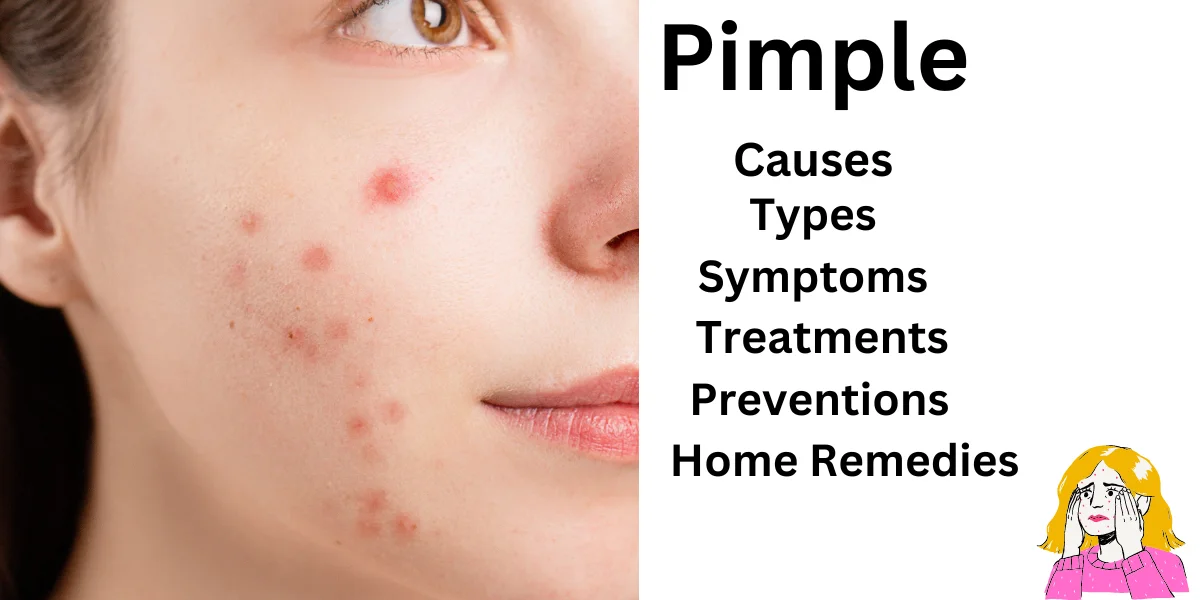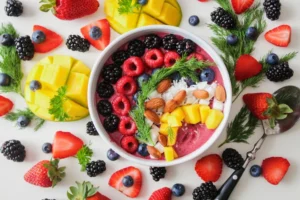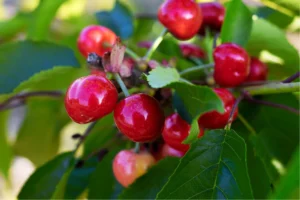A pimple is a type of skin lesion that occurs when the hair follicles on the skin become clogged with oil, dead skin cells, and bacteria. It can appear as red, swollen bumps on the skin’s surface and can be painful or itchy. They are most commonly found on the face, neck, chest, and back.
It is a common skin condition that affects people of all ages, but they are particularly prevalent during puberty due to hormonal changes that increase oil production in the skin. Poor hygiene, certain medications, and genetics can also contribute to the development of it. They are a type of acne. pimples can be unsightly and cause discomfort, but they are generally not a serious medical concern.
Treatment for it typically involves proper skin hygiene, topical or oral medications, and avoiding behaviors that can exacerbate the condition, such as picking or squeezing the pimples. In most cases, pimples will resolve or it can be banish by itself , but severe or persistent cases may require medical intervention

Difference between pimple and Acne
Pimples and acne are both skin conditions that can cause bumps on the skin, but there are some differences between them.
A pimple is a single inflamed spot that occurs when a hair follicle becomes clogged with oil and dead skin cells. They can be red, swollen, and sometimes painful, but they are usually small and localized.
Acne, on the other hand, is a more widespread skin condition that occurs when hair follicles become clogged with oil and dead skin cells, leading to the formation of multiple pimples and other types of lesions such as blackheads and whiteheads. Acne is a chronic condition that can affect larger areas of the face, chest, and back, and can be more severe and long-lasting than a single pimple.
Both acne and pimples can be caused by hormonal changes, poor hygiene, certain medications, and genetics. Treatment options for both conditions include topical or oral medications, proper skin hygiene, and avoiding behaviors that can exacerbate the condition, such as picking or squeezing the acne lesions.
You may also like..How to Get Clear Skin as a Teenager?14 effective tips 20 Home Remedies for clear skin overnight Hyaluronic Acid Benefits for Acne: Secret of clear skin
Causes :
Several factors contribute to the development of it includes:
1.Excess oil production:
When your sebaceous glands produce too much oil, it can clog your pores and lead to pimples.
2.Dead skin cells:
When dead skin cells build up on the surface of your skin, they can mix with oil and cause pimples.
3.Bacteria:
The bacteria Propionibacterium acnes can contribute to the development of pimples.
4.Hormonal changes:
Hormonal changes during puberty, menstruation, and pregnancy can increase oil production and lead to the development of pimples.
5.Genetics:
If your parents had acne, you are more likely to develop it as well.
Types of pimple
There are several types of pimples, each with its own characteristics and treatment options. Here are some of the most common types of it;
1.Whiteheads:
Whiteheads are small, raised bumps that are white or flesh-colored. They occur when the hair follicles become clogged with oil and dead skin cells.
Read more Split hair ends 15 Best hair care tips for hair loss Best Natural Skin Care Routine Best AM & PM Skincare Routine
2.Blackheads:
Blackheads are similar to whiteheads, but they appear black or dark in color. This is because the oil and dead skin cells trapped in the follicle oxidize when exposed to air.
3.Papules:
Papules are small, raised bumps that are typically red or pink in color. They occur when the hair follicles become inflamed due to bacteria, excess oil, or other factors.
4.Pustules:
Pustules are similar to papules is also known as abscess, but they contain pus. They are typically red or pink in color and have a white or yellow center.
5.Cysts:
Cysts are large, painful pimples that occur deep within the skin. They are typically filled with pus and can take several weeks to heal.
6.Nodules:
Nodules are similar to cysts, but they are larger and firmer. They are typically painful and occur deep within the skin.
Symptoms of Pimples:
The most common symptoms of includes:
1.Redness: It can be red and inflamed.
2.Pain: It can be painful to the touch.
3.Swelling: It can cause swelling in the surrounding skin.
4.Whiteheads: It can appear as small white bumps on the surface of the skin.
5.Blackheads: It can also appear as small black bumps on the surface of the skin.
Treatment of Pimples:
There are several treatments available for it, includes,
1.Over-the-counter medications: Topical creams and gels containing benzoyl peroxide, salicylic acid, or alpha-hydroxy acids can help unclog pores and reduce inflammation.
2.Prescription medications: Antibiotics, retinoids, and birth control pills can be prescribed by a dermatologist to help treat severe cases of acne.
3.Lifestyle changes: Washing your face twice a day with a gentle cleanser, avoiding touching your face, and keeping hair and clothing clean can help prevent it
4.Home remedies: Natural remedies like tea tree oil, aloe vera, and honey can be applied topically to help reduce inflammation and promote healing.
The treatment for it depends on the type and severity of the pimple. Mild pimples can often be treated with over-the-counter topical medications, such as benzoyl peroxide or salicylic acid. More severe papules may require prescription medications, such as topical or oral antibiotics, retinoids, or isotretinoin.
It is important to note that picking or squeezing it can lead to further irritation, infection, and scarring. If you have persistent or severe pimples, it is important to consult with a dermatologist for an accurate diagnosis and personalized treatment plan.
Prevention of pimple
Preventing it involves taking steps to reduce oil production, unclog pores, and reduce inflammation. Some tips to help prevent it include:
1.Washing your face twice a day with a gentle cleanser.
2.Avoiding touching your face.
3.Keeping hair and clothing clean.
4.Using oil-free and non-comedogenic skincare products.
5.Avoiding excessive sun exposure.
6.Eating a healthy diet.
7.Managing stress levels.
Eradicate pimples with these Home remedies
1.Tea Tree Oil: Dilute tea tree oil with water or a carrier oil, and apply it to the affected area. Tea tree oil has anti-inflammatory and antibacterial properties that can help reduce inflammation and kill bacteria.
2.Honey and Cinnamon Mask: Mix honey and cinnamon together to make a paste, and apply it to the affected area. Honey has antibacterial properties, while cinnamon has anti-inflammatory properties.
3.Aloe Vera: Apply pure aloe vera gel to the affected area. Aloe vera has anti-inflammatory properties and can help reduce redness and swelling.
4.Lemon Juice: Apply freshly squeezed lemon juice to the affected area with a cotton swab. Lemon juice has astringent and antibacterial properties that can help dry out it. It will help to vanish your acne easily.
5.Apple Cider Vinegar: Dilute apple cider vinegar with water, and apply it to the affected area with a cotton swab. Apple cider vinegar has antibacterial and astringent properties that can help kill bacteria and dry out the pimple.
6.Garlic: Crush a clove of garlic and apply it to the affected area. Garlic has antibacterial properties that can help kill bacteria and reduce inflammation.
7.Green Tea: Steep a green tea bag in hot water for a few minutes, let it cool down, and apply it to the affected area. Green tea has anti-inflammatory properties that can help reduce inflammation and redness.
8.Witch Hazel: Apply witch hazel to the affected area with a cotton swab. Witch hazel has astringent and anti-inflammatory properties that can help dry out the pimple and reduce inflammation.
9.Baking Soda: Mix baking soda with water to make a paste, and apply it to the affected area. Baking soda has exfoliating and antibacterial properties that can help unclog pores and kill bacteria.
10.Ice: Wrap an ice cube in a clean cloth and apply it to the affected area for a few minutes at a time. Ice has a numbing effect that can help reduce inflammation and pain.
Conclusion
In conclusion, pimples are a common skin condition that can be caused by several factors, including excess oil production, dead skin cells, bacteria, hormonal changes, and genetics. There are several treatments available to help reduce inflammation and promote healing, including over-the-counter and prescription medications, lifestyle changes, and home remedies. Taking steps to prevent pimples can help reduce the likelihood of developing them in the first place. And some of the home remedies can also help in curing it easily at home.
Disclaimer: The advice and suggestions mentioned in the article are for general information purpose only and it should not be taken as professional medical advice. Always consult your doctor if you have any questions or concerns.
FAQs-
How to remove or banish pimple?
To remove a pimple, try applying a spot treatment containing benzoyl peroxide or salicylic acid, and avoid picking or squeezing it to prevent further irritation and potential scarring.
what are four types of pimple?
whiteheads, blackheads, papules,pustules are four types of pimples.
Is it ok to pop pimples?
It is generally not recommended to pop a it, as it can cause further inflammation, infection, and potential scarring.
What are the main causes of pimples ?
The main causes of it is excess oil production, clogged hair follicles due to dead skin cells and bacteria, hormonal changes, stress, and certain medications or products that can clog pores.
How can I remove pimples naturally?
You can remove it naturally by adopting a healthy skincare routine that includes washing your face twice a day, using oil-free and non-comedogenic products, and avoiding touching your face frequently.
What causes pimples on face?
Pimples on the face are primarily caused by excess oil production, clogged hair follicles due to dead skin cells and bacteria, hormonal changes, and genetics.
What causes pimples in ear ?
Pimples in the ear can be caused by factors such as excess oil production, bacteria, or clogged hair follicles due to the use of earphones or hearing aids, poor hygiene, or skin conditions such as acne or eczema.
What causes pimples on chin ?
Pimples on the chin can be caused by hormonal changes, stress, poor diet, bacteria, and wearing tight-fitting clothing or using makeup and skincare products that clog pores
What causes pimples on tongue ?
Pimples on the tongue can be caused by factors such as stress, hormonal changes, viral or bacterial infections, food allergies or sensitivities, or certain medications.




